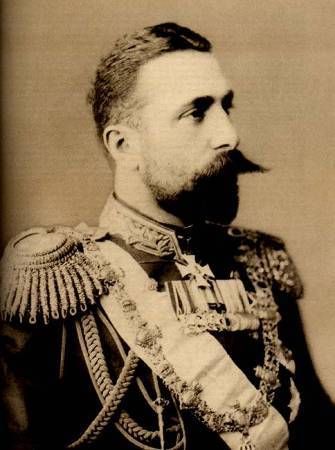The Third Bulgarian State had its start with the San-Stefano peace agreement signed on March 3, 1878. According to this agreement Bulgaria was restored on the territory of the three historical and ethnic Bulgarian regions – namely *Moesia, **Thrace and ***Macedonia. Bulgaria became the biggest Balkan country. 13 July 1878 - the treaty of Berlin was signed on the force of which the newly-liberated Bulgaria was divided into the Principality of Bulgaria and Eastern Rumelia and a large portion of the Bulgarian lands was cut away to remain under Ottoman domination. 3 April 1879 - Sofia became the capital of the new Bulgarian State. 16 April 1879 - the Tarnovo Constitution was passed solemnly by the First Grand National Assembly. 26 June 1879 - Alexander Battenberg became prince of Bulgaria. 6 September 1885 - Unification of the Principality of Bulgaria and Eastern Rumelia (the real-term liberation of Bulgaria). 22 September 1908 - Ferdinand I proclaimed Bulgaria’s full independence from Turkish rule and Bulgaria became kingdom. *Moesia - Ancient district in Eastern Europe, corresponding roughly to modern Serbia and Bulgaria. The inhabitants were subdued by the Romans 15 AD and it was formally organized as a Roman province. Moesia was bounded on the South by Thrace and Macedonia, on the West – by Illyricum and Pannonia, on the North – by the river Danube, and on the East – by the Black Sea. The inhabitants were a Thracian people who were finally subdued by Roman forces under Marcus Licinius Crassus, grandson of Crassus the triumvir. The emperor Domitian (ruled AD 81-96) divided it into Moesia Superior (in the West) and Moesia Inferior (in the East), divided by the river Cebrus (modern river Maritsa). Moesia Superior and Moesia Inferior were invaded by the Goths in 250 AD, and when the emperor Aurelian surrendered the Roman province Dacia to the Goths and moved its inhabitants south of the Danube, the central region of Moesia was called Dacia Aureliani. **Thrace - Ancient region of the Balkans, southeastern Europe, formed by parts of modern Greece and Bulgaria. It was held successively by the Greeks, Persians, Macedonians, and Romans. The heart of the ancient Thracian Empire was Bulgaria, where from the end of XIX century up to now there have been tomb finds of gold and silver dishes, drinking vessels, and jewelry with animal designs. The legend of Orpheus and the cult of Dionysus were both derived by the Greeks from Thrace. The area was conquered by Persia in the beginning of the 5th century BC and by Macedonia in 4th century BC. From AD 46 it was a Roman province, then part of the Byzantine Empire, and Turkish from the 15th century until 1878; it was then subject to constant dispute until after World War I, when it was divided (1923) into western Thrace (the Greek province of Thraki) and eastern Thrace (European Turkey). ***Macedonia - Mountainous region of N Greece, part of the ancient country of Macedonia which was divided between Serbia, Bulgaria, and Greece after the Balkan Wars of 1912-1913. Greek Macedonia is bounded West and North by Albania and the Former Yugoslav Republic of Macedonia; area 34,177 sq. km/13,200 sq. mi.; population (1991) 2,263,000. There are two regions, Macedonia Central, and Macedonia East and Thrace. The chief city is Thessaloniki. The Former Yugoslav Republic of Macedonia has refused to give up claims to the present Greek province of Macedonia, and has placed the star of Macedonia, symbol of the ancient Greek Kings of Macedonia, on its flag. Fertile valleys produce grain, olives, grapes, tobacco, and livestock. Mount Olympus rises to 2,918 m/9,570 ft on the border with Thessaly. |


